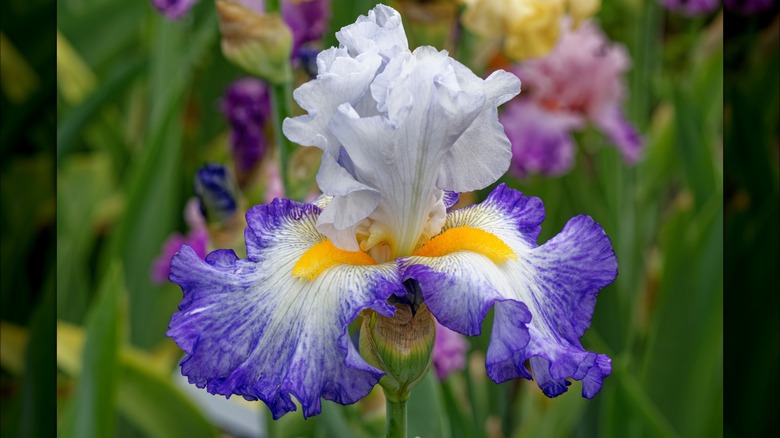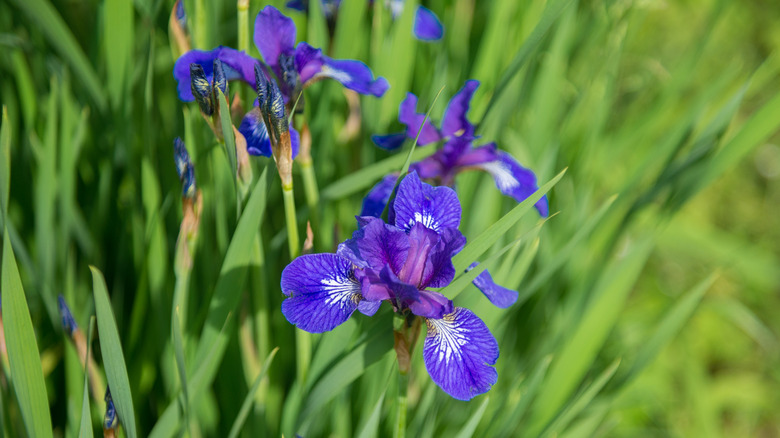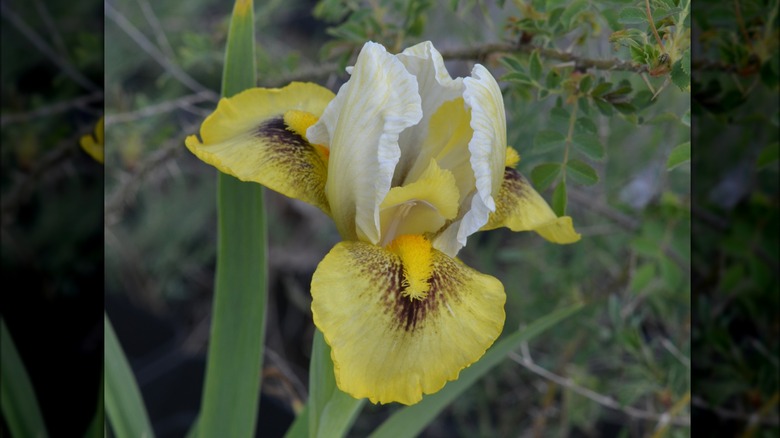Irises are among the most versatile flowers you can add to your garden. Some types grow up to 4 feet tall, while miniature dwarf varieties are as tiny as 2 inches. These gorgeous perennials also come in a broad range of colors from snow white to almost black. Perhaps the only downside to growing irises is that they only bloom for a few weeks, but by planting a variety of bearded, beardless, and aril species, you can enjoy iris blooms for up to a few months.
While there are three main types of irises, there are many subcategories within each. To simplify the judging process in competitions, The American Iris Society has created classifications within each of the three main types based on their unique qualities. While these classifications are not important for the home grower, they do help us understand the broad range of growing conditions and specific features of each type of iris.
Bearded irises

At first glance, some bearded and beardless iris species look similar. What sets them apart is the small patch of fuzz on the lower petals of bearded varieties. These downward-facing petals are called “falls” and are one of the features that makes all kinds of irises unique. Within this category of flowers are miniature, standard dwarf, intermediate, border, miniature tall, and tall bearded types. Even within these categories are more species with too many unique features to list, but understanding the height differences in each type can help you decide where they will fit best in your garden.
As a general rule, the shortest varieties are the first to bloom while the tallest are the last. Planting a variety of sizes also gives you an extended season of constantly blooming irises. One thing all bearded irises have in common is their rhizomes. Bearded iris roots, or rhizomes, need access to the sun, so they cannot be completely buried or covered with mulch when planted. Bearded varieties tend to be drought tolerant, so they can be added to areas without irrigation.
Beardless irises

Beardless irises have entirely different classifications based on each type’s unique features rather than heights. These flowers are known as Spurias, Siberians, Japanese, Louisianas, Pacific Coast Natives, and Species (sort of a generic term to encompass the remainder of these types). Ironically, while all the classifications are based on locations, beardless irises primarily originated in Asia. Some of these types will only grow in very specific conditions, but if you can grow them you will be rewarded with some of the most stunning blooms. Japanese beardless irises are particularly sought after for their exceptionally large, ruffled flowers.
Aside from the little fuzzy soul patch possessed by bearded irises, there is another big difference between these two types of plants. Whereas bearded cultivars need to have exposed rhizomes, beardless types can be fully buried and mulched. If you like to have a tidy, fully mulched space, this may be your best option. Once established, beardless irises become drought tolerant, and they can thrive and bloom in partial shade.
Aril irises

Aleksandr Naumenko/Shutterstock
The third and most environmentally picky type of irises are those in the aril group. These irises provide some of the most vibrant blooms in the brightest colors and patterns. Aril irises may or may not have beards, making them available in unique shapes. Some have “eyes” that offer a distinct contrast against their brightly colored petals. One thing you won’t find in this type of iris is a boring bloom.
Since aril irises are native to desert and semi-arid regions, they will not overwinter anywhere the temperature drops below freezing. For this reason, they can only be grown as perennials outdoors in the warmest regions of the U.S. You may be able to get around this by growing the rhizomes in planters and bringing them indoors for the winter. It may be a challenge to grow aril irises, but if you succeed, the reward will certainly be worth the effort. If you have your heart set on one of these stunning types of iris, look for arilbreds, which are hybrid species that offer similarly gorgeous blooms that can be grown in most regions.




